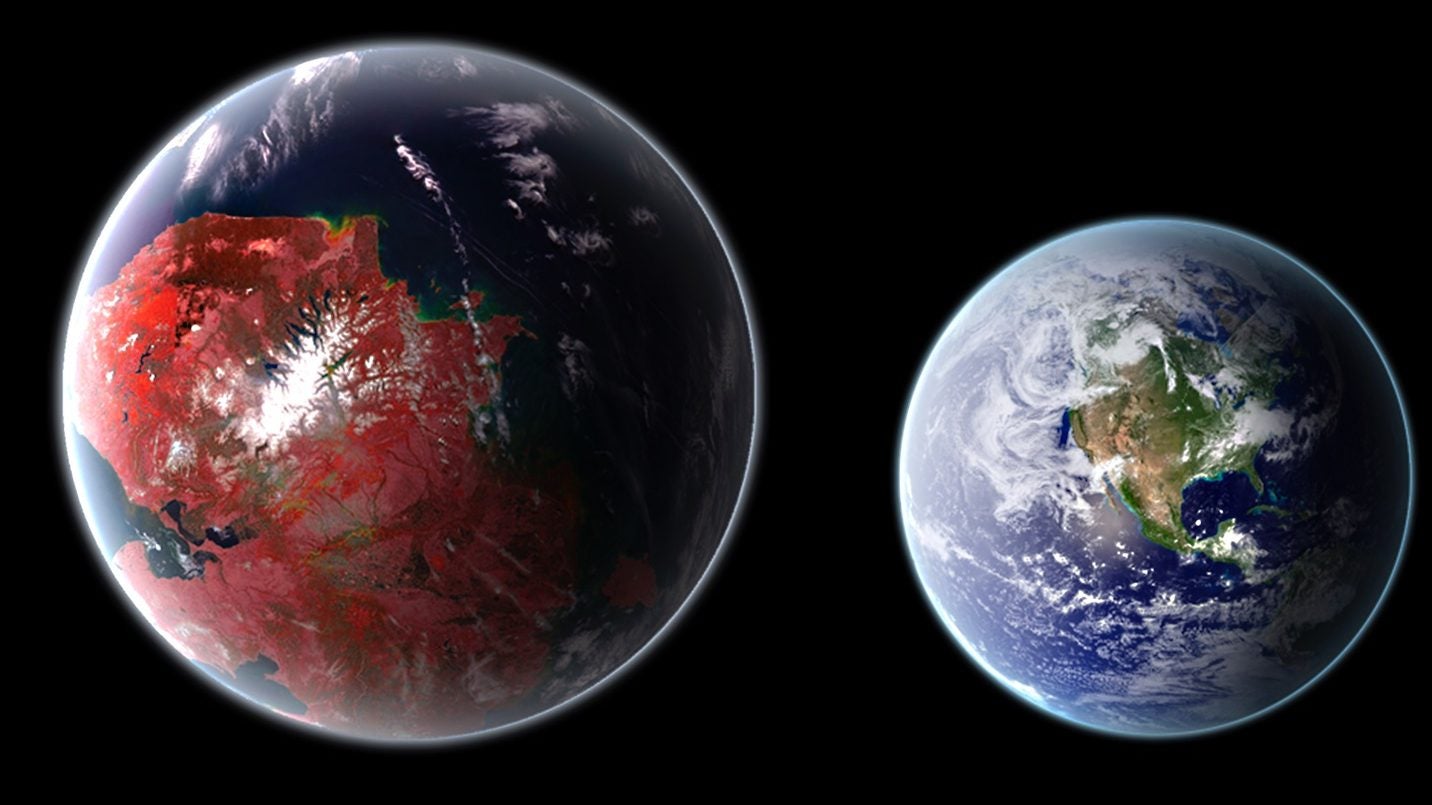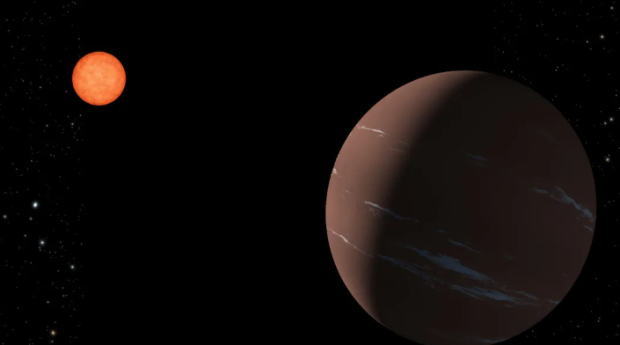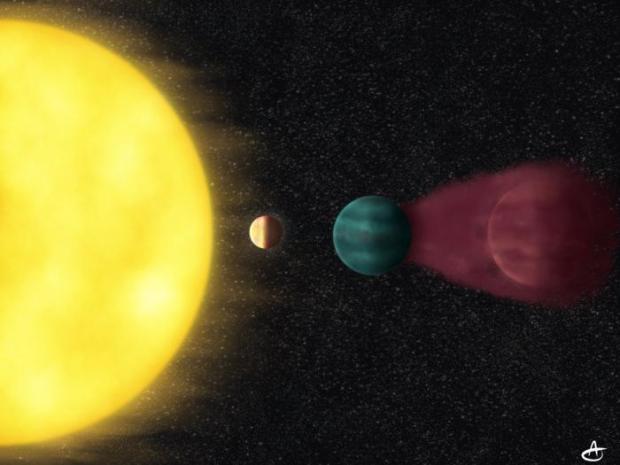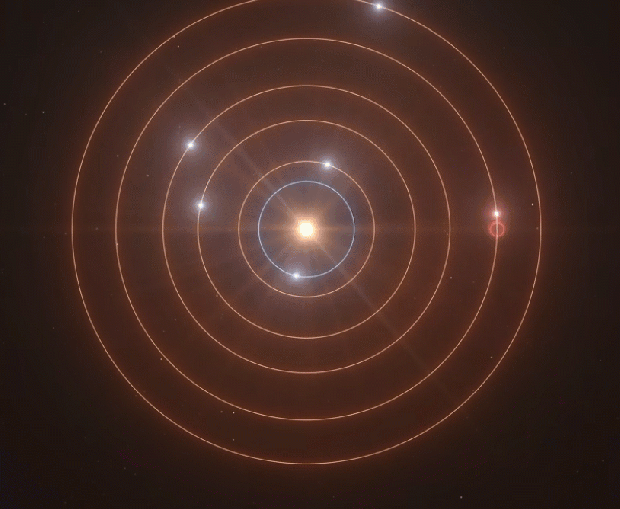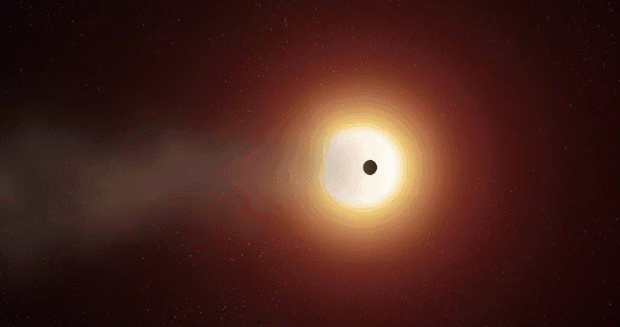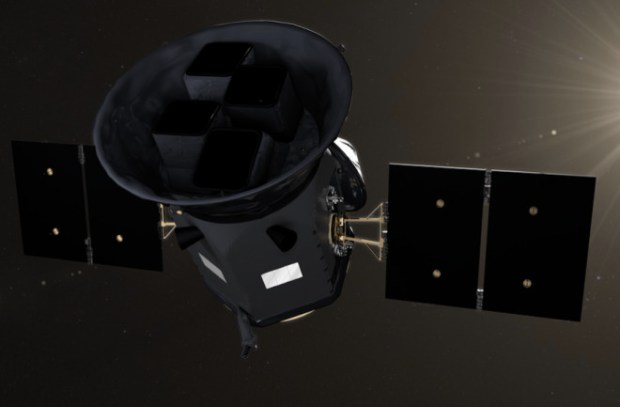An extrasolar planet, or exoplanet, is basically a planet that lies outside our own solar system. The International Astronomical Union (IAU) is still hashing out a final definition, but as it stands now, it is an object that orbits a star and is no more than 13 times Jupiter’s mass (at which point fusion begins for an isotope of hydrogen, called deuterium, and the object begins to look like a star).
Astronomers had long theorized that many of the universe’s billions of stars likely hosted planets, much as the sun hosts Earth and other orbiting objects. But the technology to reliably detect these planets was developed only recently. In 1991, astronomers found evidence for the first extrasolar planet around a radio pulsar called B1257+12. Then in 1995, researchers found the first extrasolar planet orbiting a star similar to our sun. Now, the tally of extrasolar planets has topped 100 and continues to grow (For an up-to-date list, see The Extrasolar Planets Encyclopedia.)
A transit is when a planet passes between Earth and a star. Astronomers can’t see the planet itself (at these distances, the star’s light overwhelms the planet, which shines only by reflected starlight), but if they know when to look, they can catch it passing in front of the star because the star dims.
Transit links
http://www.kepler.arc.nasa.gov/faq.html
http://planetquest.jpl.nasa.gov (click on “Four ways to find a planet”)
http://www.obs-nice.fr/guillot/anim/transit.gif
http://oposite.stsci.edu/pubinfo/pr/2001/38/animation.html
http://imgsrc.stsci.edu/op/pubinfo/pr/2001/38/content/v0138b2.mpg (633-kb movie)
Only one transit has been confirmed outside the solar system, but transits in the solar system happen occasionally. Mercury transited the sun on November 15, 1999, and will again on May 7, 2003 (visible from Europe, Africa, and Asia).
Mercury transit information
1999: http://sunearth.gsfc.nasa.gov/eclipse/OH/transit99.html
2003: http://sunearth.gsfc.nasa.gov/eclipse/OH/transit99.html
Venus will transit the sun on June 8, 2004, and on June 6, 2012.
http://sunearth.gsfc.nasa.gov/eclipse/transit/venus0412.html
Only one so far, which is why Transitsearch.org was created! The only star currently known to possess a transiting planet is the 7.65-magnitude star HD 209458 in the constellation Pegasi. The star is 47 parsecs (153 light-years) away and is of spectral type G0V, similar to but slightly hotter than our sun. (For more information on the star see http://cfa-www.harvard.edu/planets/HD209458.html.) Two independent teams found the planet using the radial velocity, or Doppler, method in the fall of 1999. Once astronomers discovered the planet had a 3.52-day orbital period, it was a relatively simple matter to predict the next transit. Actually measuring the small changes in brightness is, unfortunately, not so simple.
For more on the HD 209458 transits, see http://www.hao.ucar.edu/public/research/stare/hd209458.html.
Jupiter is about 10 percent as wide as the sun (or about one percent as large in area). So when a Jupiter-size planet passes directly in front of a sun-size star, the fractional area of the stellar disc blocked by the planet is one percent. For planets in short, circular orbits, it takes about three hours for the planet to transit — to completely cross the disk of the star. If the orbit isn’t circular or seen exactly edge-on, that estimate could change. For planets in orbits very close to their stars, the radiation from the star actually expands the atmosphere of the planet and increases its radius. HD 209458b, the only planet confirmed to transit, has a radius almost 40 percent larger than Jupiter’s. This increased radius is good news for transit hunters — the longer transit signal makes the planet easier to detect.
Astronomical photometry is the measurement of an object’s brightness.
Differential photometry measures the ratio of the brightness of a target star and one or more comparison stars. With CCDs, which allow the simultaneous imaging of many stars, differential photometry is relatively easy. Single-channel photometers are also used for differential photometry, but because the telescope must be repositioned from star to star to make one measurement, brightness corrections may be necessary.
Our advice is to begin obtaining light curves of variable stars with your CCD and telescope first. There is a large body of experience about variable star observing and in general the average variable star exhibits a change in brightness that is large enough that it can be more easily detected than a planetary transit. Eclipsing binaries make good targets because their eclipse times are well known and you can schedule your observing for just those times where an eclipse can be seen. This is also good practice for not only getting good data but getting good data on demand, key for transit search success!
You might want to consider trying a focal reducer to decrease the telescope’s focal length and increase its field of view or try a target star where more comparison stars might be available.
Although we are reluctant to endorse specific products (in fact federal regulations prohibit this), we can list useful CCD attributes based on our experience with scientific-grade devices used at professional observatories. They are:
• Low read noise
• Low dark current
• An analog-to-digital converter of close to 16 bits
• No antiblooming features (although antiblooming CCDs can be made to work with care)
• Large enough to simultaneously image the object star and an equally bright comparison star
First calibrate your images using dark, bias, and flat-field operations. Any program that can perform aperture photometry will allow you to measure the brightness of the object star and at least one comparison star.
You’ll need to be able to:
• Set the aperture size for the star
• Set the inner and outer radius for the background measurement
• See an estimate of the signal-to-noise ratio (the inverse of the precision) for each star to decide if your images are good enough to reduce, as well as which comparison star to use and how big to set the apertures.
• Do this for series of hundreds of images so you won’t have to manually select the stars on subsequent frames.
• The software should assign a time to each brightness measurement based on the information in the FITS header. The fractional Julian day is best here, but GMT will do.
• Either plot the ratio of brightness measurements directly or output a table of brightness and time that can be imported into a spreadsheet, from which the brightness ratio can be calculated and the results plotted.
No. We are only interested in brightness changes that signal a transit, not the magnitude of any star on a standard system.
Reduce them and look for a transit. Use your spreadsheet’s standard deviation formula to determine the standard deviation of the series of measurements. If it looks like this, post your results at the Transitsearch.org message board.



